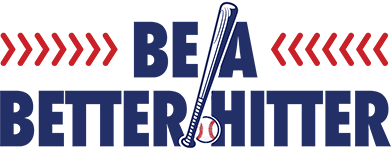Training for Performance Not Just Strength
So how strong is strong enough? As I travel throughout the United States and answer e-mails from a world wide audience, the same questions keep repeating themselves, most of which include the word strength.
Strength is just one of the characteristics and athlete needs in order to be successful, but definitely not the most important. I recently read a statistic that stated since the inception of strength and conditioning coaches on the professional baseball scene, injury rates have actually increased. When you first read this statement, it just doesn’t make sense, but when you really look into it, and do further research, many of the methods being used by these coaches and philosophies are based on the enhancement of one thing, strength.
In our Organization the title Strength and Conditioning Coach was replaced by the title Performance Enhancement Specialist. The reason why is simple, our goal is to enhance game performance while at the same time lowering the predisposition to injury. By increasing strength, and failing to address poor posture, alignment, joint dysfunction, and muscle imbalances/ asymmetries, you will actually accelerate the incidence of injury. If you provide an athlete that is unstable and has some of the previously mentioned conditions, increasing strength is like driving a Ferrari into brick wall verses a Honda Civic. The increased power and strength will make the impact more significant.
Sticking with the car analogies, ask yourself what would happen if you were to drive your car with unbalanced tires that were out of alignment. Your car would pull one way or the other, and produce uneven wear and tear on the tires. The human body works the same way with the feet being your tires, and all the joints above them acting as receivers of the negative stress.
Many strength and conditioning programs throughout the country are the same for all athletes, containing the same exercises for somebody with flat feet, or with a tilted pelvis, or with elevated shoulders. This is scary because each one of the aforementioned has its own protocols that should be used to correct the problem. If Coaches continue to allow athletes to train with these limitations, the end result will be injury. In the profession of Performance Training, our success is rated by the incidence of injury, days on the DL, and how the athlete feels on a day to day basis.
So if we aren’t focusing just on strength, what else should be focus on? The key to developing athleticism is placing emphasis on all of the following:
- Pre-Habilitation/ Injury Prevention/ Asymmetry Rectification
- Recovery
- Balance
- Coordination
- Stability
- Power / Elastic Strength
- Joint Function and Range of Motion
- Multi-Planar Strength
- ESD-Energy System Development/ Sport-Specific Conditioning
When all of the previously mentioned are working in symmetry that allows for the greatest end result; a top performing athlete will a decreased chance for injury. Each of these components of athleticism are important. The most important being the Injury Prevention and Joint Function components. This will ensure that the athletes structure/ foundation is functioning appropriately, and will not cause a collapse of the Empire that will be built on top of it.
The ability to assess each athlete will allow you as a coach to discover what each athlete truly needs. There are several assessment protocols we use, but for those without experience in observing movement, it would be recommended to bring in a movement therapist, or physical therapist to assess each of you athletes, and then focus on the development of an individualized corrective exercise program based off of the measurements and movement tests that the therapist performs.
In summary, strength is a small piece of the puzzle. The power of assessment will allow you to see limitations an athlete might have that could be preventing them from executing the sport-specific skill you are asking of them. Athletes are tremendous compensators, so movement testing will expose their weakest links.

I play in my town softball league, the field that we play on, the fence is 255 feet. My hits always seen to get to the warning track of 245 feet. I tied a lot of things to do, (under/overloading ,bench pressing, leg squats, triceps dipping, core exercise) still about 245 feet. I use 28 ounce Easton 300s bat, I used my team mate bat, his is a 27 ounce Demarini bat. I hit two about 235-245 feet only. Please help with any tips. Thank you.
Hello,,
My son has strengthened his core muscles to such a degree that he is lacking in the elasticity needed to create power. More specifically, as he rotates to hit the ball, his shoulders don’t benefit fully from the elasticity created by the lower body turning, because his core is very, very strong. He is 15 years old and led his team in home runs until he was 12 years old, but his power has slowly dropped off. In comparing videos from his 12 to 15 year old swing, it is obvious that his core elasticity had diminished significantly. Note: he doesn’t have bulky muscles, and is somewhat thin, so regaining his core elasticity is imperative to regaining his power.
Do you have any suggestions on stretches and drills to regain his core elasticity? Any advice is much appreciated.